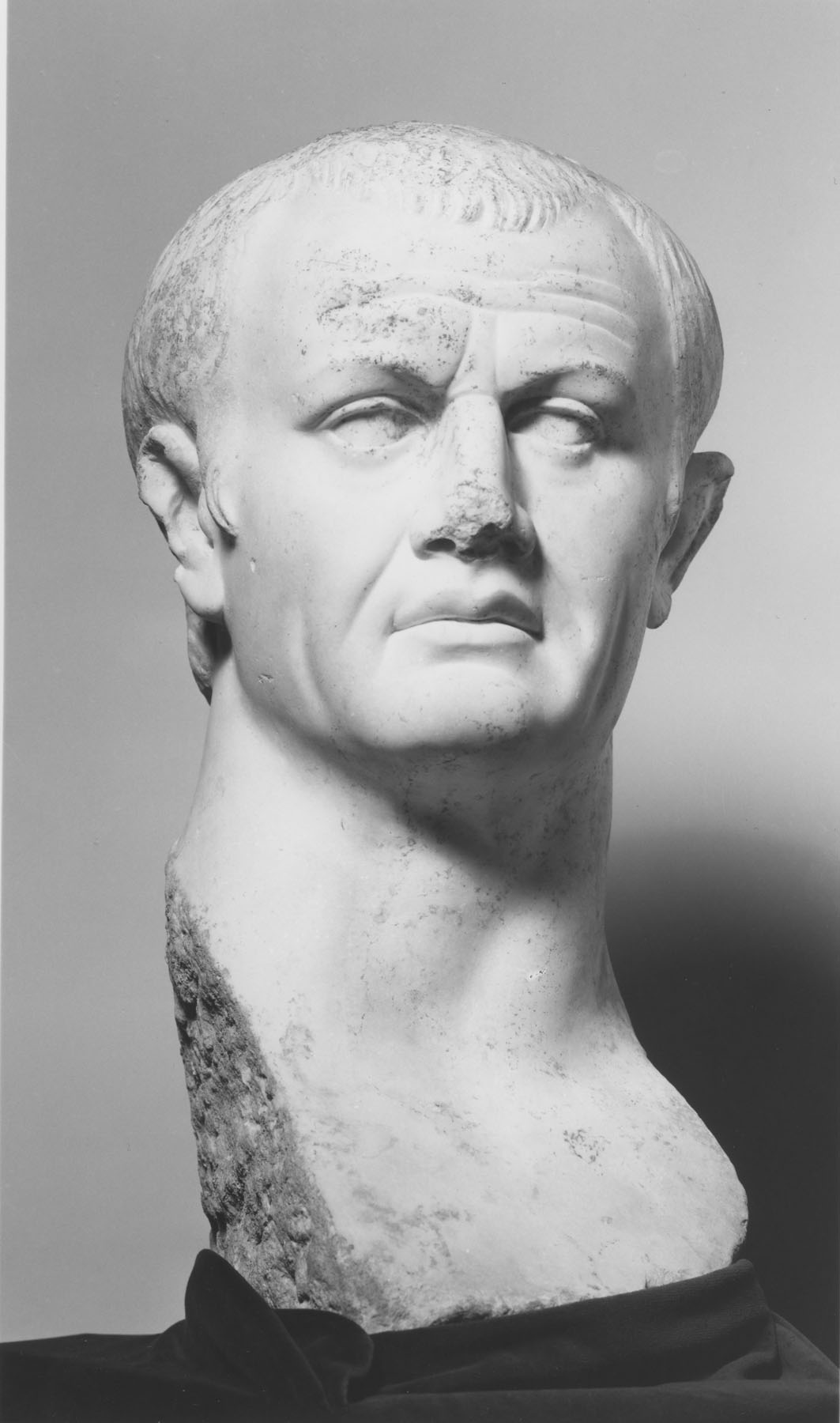Head of an Emperor
(Roman Empire )
The large eyes and distinctive features suggest that this head represents the Flavian emperor Vespasian (reigned 69-79 CE). However, the flatness of the face and hairstyle suggest that this was originally a portrait head of Emperor Nero (reigned 54-68 CE) that was re-carved to resemble Vespasian.
Provenance
Provenance (from the French provenir, 'to come from/forth') is the chronology of the ownership, custody, or location of a historical object. Learn more about provenance at the Walters.
[Found at Pergamon (?)]; Jean P. Lambros Collection Sale, Athens, 1912, no. 268; Henry Walters, Baltimore, 1912, by purchase; Walters Art Museum, 1931, by bequest.
Conservation
| Date | Description | Narrative |
|---|---|---|
| Technical Report | x-ray diffraction; other | |
| 11/20/1941 | Treatment | cleaned |
| 6/22/1961 | Treatment | cleaned |
| 7/20/1970 | Treatment | cleaned |
| 6/28/1988 | Loan Consideration | other |
| 6/18/2001 | Treatment | cleaned |
| 6/25/2001 | Treatment | other |
Geographies
Italy, Rome
(Place of Origin)
Greece, Thasos, Cape Vathy Quarry (Source of Materials)
Measurements
H: 26 x W: 12 1/4 x D: 14 7/16 in. (66 x 31.1 x 36.6 cm)
Credit Line
Acquired by Henry Walters, 1912
Location in Museum
Accession Number
In libraries, galleries, museums, and archives, an accession number is a unique identifier assigned to each object in the collection.
In libraries, galleries, museums, and archives, an accession number is a unique identifier assigned to each object in the collection.
23.119


